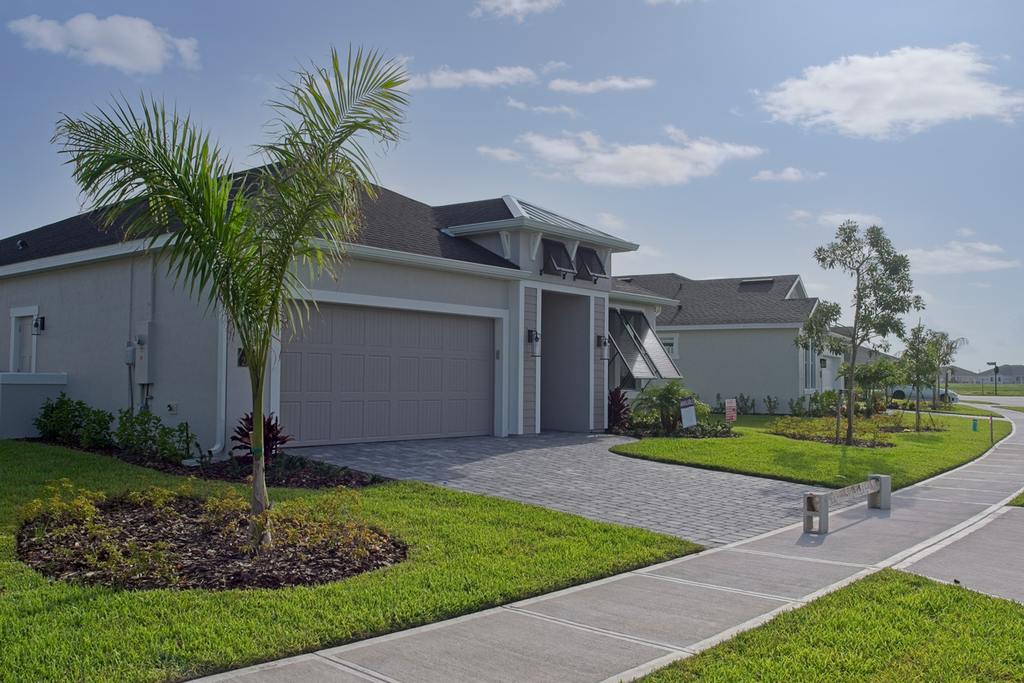
Cockroach Control in Northeast Florida
Living in Northeast Florida offers many perks, from beautiful beaches to warm weather year-round. However, this tropical paradise also comes with its fair share of pest problems, particularly cockroaches. The humid climate and abundance of vegetation in cities like Jacksonville, St. Augustine, and Fernandina Beach create ideal conditions for these resilient insects to thrive.
If you're dealing with a cockroach infestation in your Northeast Florida home, you're not alone. These pests are a common nuisance in the region, often invading homes in search of food, water, and shelter. Left unchecked, cockroaches can pose serious health risks and cause damage to your property. That's why it's crucial to address the problem promptly and effectively.
For expert assistance in tackling your cockroach troubles, consider reaching out to All U Need Pest Control at (888) 239-Bugs (888-239-2847). Their team of professionals understands the unique challenges posed by Northeast Florida's climate and can provide tailored solutions to keep your home cockroach-free. In this comprehensive guide, we'll explore effective methods for cockroach control specific to our region, helping you reclaim your space from these unwanted guests.
Pest Control Services in Northeast Florida

How to Get Rid of Cockroaches in Northeast Florida
Eliminating cockroaches from your Northeast Florida home requires a multi-faceted approach tailored to our unique environment. The warm, humid climate and lush vegetation characteristic of areas like Amelia Island and Palm Coast provide ideal conditions for cockroach populations to flourish. Here’s how you can effectively combat these resilient pests:
Cockroach Baiting
One of the most effective methods for controlling cockroaches in Northeast Florida homes is through strategic baiting. This technique involves placing specially formulated bait stations in areas where cockroaches are likely to frequent. The bait contains a slow-acting insecticide mixed with attractive food sources.
When implementing a baiting strategy in your Northeast Florida home, consider the following:
- Placement is key Focus on areas with high moisture, such as under sinks, behind appliances, and in bathroom corners. In our humid climate, these spots are particularly attractive to cockroaches.
- Use gel baits Gel formulations work well in our warm environment, as they resist drying out longer than solid baits.
- Rotate bait types Cockroaches can develop bait aversion, so switch between different active ingredients every few months.
- Be patient Baiting takes time to work through the entire cockroach population. You may see an increase in activity initially as roaches are drawn to the bait.
- Combine with other methods While effective, baiting works best as part of a comprehensive pest control strategy.
Cockroach Insecticide
When dealing with severe infestations, particularly in older Northeast Florida homes with numerous hiding spots, insecticides can be a powerful tool. However, it’s crucial to use these products safely and effectively:
- Choose the right product Look for insecticides specifically formulated for cockroach control in humid environments like ours.
- Focus on cracks and crevices Apply insecticides to areas where cockroaches hide, such as behind baseboards and inside wall voids.
- Use residual sprays These products continue working for weeks or months after application, providing long-term protection against reinfestation.
- Consider growth regulators Insect growth regulators (IGRs) disrupt the cockroach life cycle, preventing reproduction and long-term population growth.
- Be cautious around water Many Northeast Florida homes have pools or are near bodies of water. Avoid contaminating these areas with insecticides.
- Ventilate properly Our warm climate means we often keep windows closed and AC running. Ensure proper ventilation when using any chemical treatments.
Remember, while insecticides can be effective, they should be used judiciously and as part of a broader pest management strategy.
Integrated Pest Management Strategies
For long-term cockroach control in Northeast Florida, an Integrated Pest Management (IPM) approach is often the most effective. This strategy combines various control methods and focuses on prevention:
- Identify and seal entry points Inspect your home’s exterior for cracks and gaps, paying special attention to areas where utilities enter. Our subtropical climate can cause materials to expand and contract, creating new entry points over time.
- Reduce moisture Fix leaky pipes and use dehumidifiers in damp areas. In our humid climate, controlling moisture is crucial for deterring cockroaches.
- Proper food storage Store food in airtight containers and regularly clean up crumbs and spills. Our warm weather can cause food to spoil quickly, attracting pests.
- Declutter Remove cardboard boxes and unnecessary clutter that can provide hiding spots for roaches.
- Natural predators Encourage natural cockroach predators like lizards and geckos, which are common in Northeast Florida.
- Regular monitoring Use sticky traps to monitor cockroach activity and identify problem areas early.
- Professional inspections Schedule regular pest control inspections to catch infestations before they become severe.
By combining these strategies, you can create an environment that’s inhospitable to cockroaches while minimizing the use of chemicals.
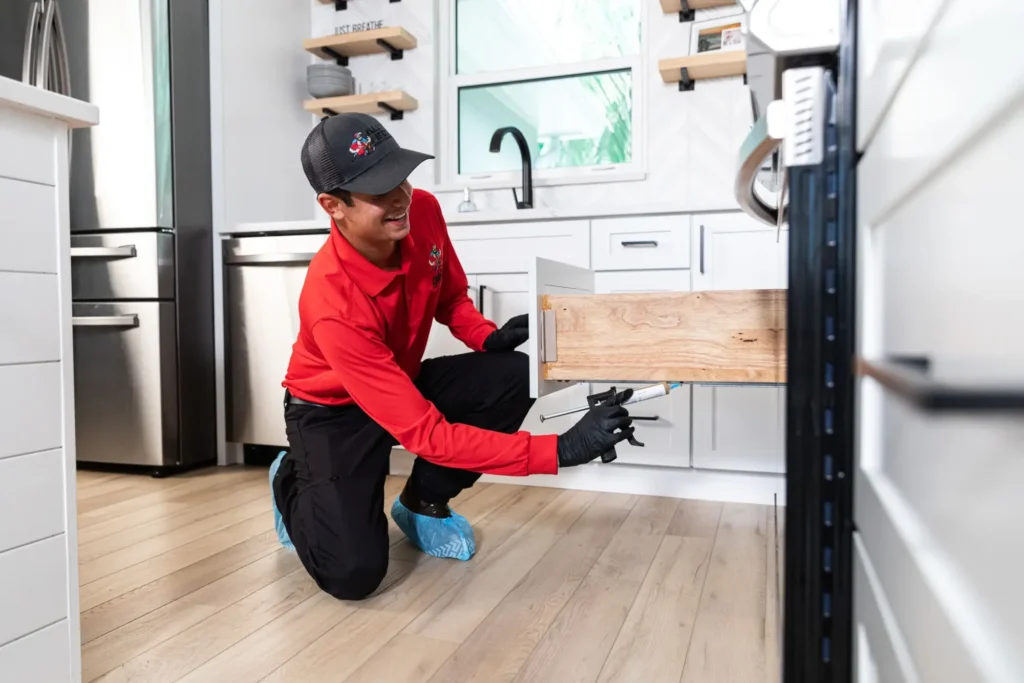
Cockroach Treatment in Northeast Florida
When it comes to treating a cockroach infestation in Northeast Florida, it’s essential to tailor your approach to our unique climate and environment. Here’s a step-by-step guide to effectively treating your home:
- Thorough Inspection Begin with a comprehensive inspection of your property. Pay close attention to warm, moist areas like kitchens, bathrooms, and laundry rooms. In our humid climate, these areas are particularly attractive to cockroaches.
- Identify the Species Different cockroach species require different treatment approaches. In Northeast Florida, you’re likely to encounter American, German, and Florida Woods cockroaches. Identifying the species will help you target your treatment more effectively.
- Sanitation Before applying any treatments, thoroughly clean your home. Pay special attention to areas where food debris might accumulate, like under appliances and in pantries.
- Seal Entry Points Inspect the exterior of your home for potential entry points. Our warm climate can cause materials to expand and contract, creating gaps over time. Seal these with caulk or weatherstripping.
- Reduce Moisture Address any sources of excess moisture in and around your home. This might include fixing leaky pipes, improving ventilation, or using dehumidifiers in damp areas.
- Apply Treatments Based on the severity of the infestation and the species involved, apply appropriate treatments. This might include gel baits in cracks and crevices, insecticide dusts in wall voids and behind electrical outlets, residual sprays around baseboards and other potential hiding spots, and insect growth regulators to disrupt the cockroach life cycle.
- Monitor and Follow Up Place sticky traps in key areas to monitor cockroach activity. Be prepared to reapply treatments as needed, especially during our warm, humid summers when cockroach activity tends to increase.
- Outdoor Treatment Don’t forget to treat the exterior of your home. In Northeast Florida, cockroaches often live outdoors and may enter homes seeking food or shelter. Treat around the foundation, in mulched areas, and around outdoor structures like sheds or garages.
- Ongoing Prevention Implement long-term prevention strategies to keep cockroaches at bay. This includes regular cleaning, proper food storage, and addressing moisture issues promptly.
Remember, treating a cockroach infestation in Northeast Florida is often an ongoing process. Our climate provides ideal conditions for these pests, so persistence and vigilance are key to long-term control.
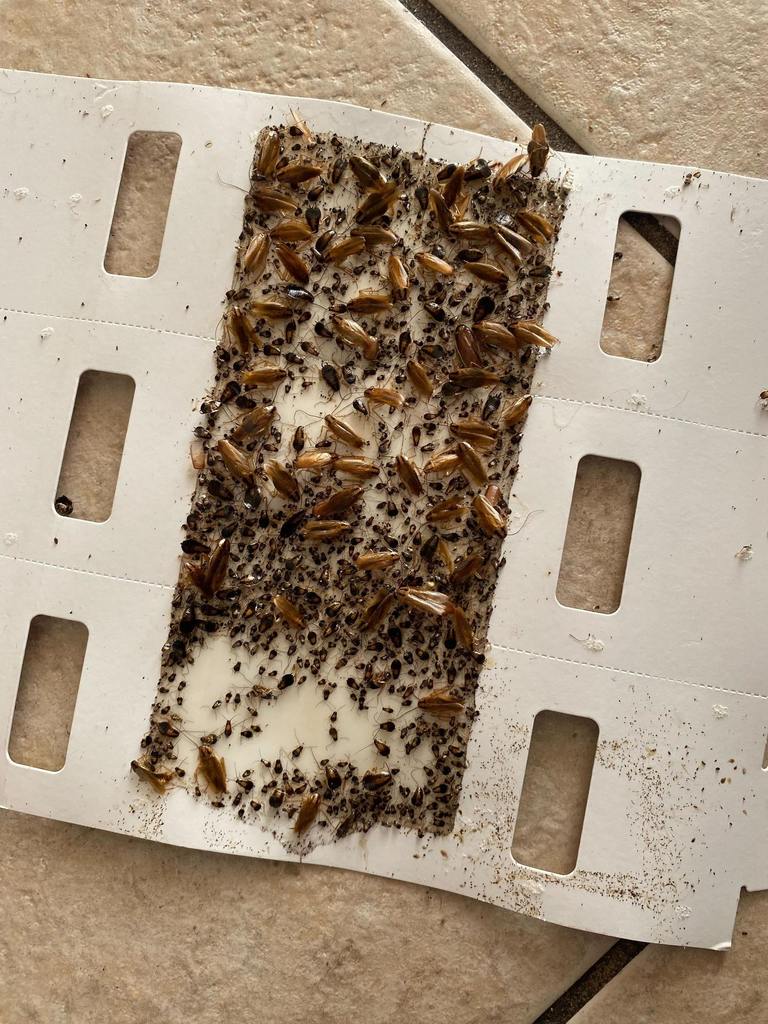
Signs of a Cockroach Infestation in Northeast Florida
Recognizing the signs of a cockroach infestation early can help you address the problem before it becomes severe. In Northeast Florida, where our warm, humid climate provides ideal conditions for cockroaches, it’s especially important to stay vigilant. Here are key indicators to watch for:
- Live Cockroaches The most obvious sign is seeing live cockroaches, especially during the day. In Northeast Florida, you might spot them scurrying across floors or countertops, particularly in kitchens and bathrooms.
- Cockroach Droppings Look for small, dark droppings that resemble coffee grounds or black pepper. In severe infestations, you might find these in drawers, under sinks, or along baseboards.
- Egg Cases Cockroach egg cases, or oothecae, are small, brown, and oval-shaped. In our warm climate, you might find these in hidden areas like behind appliances or in closets.
- Musty Odor A strong, musty smell can indicate a large cockroach population. This is particularly noticeable in enclosed spaces like cabinets or pantries.
- Smear Marks Cockroaches leave dark, irregular smear marks on surfaces they frequently travel. Look for these along walls, in corners, and around plumbing fixtures.
- Cast Skins As cockroaches grow, they shed their exoskeletons. Finding these light brown, empty shells is a clear sign of an active infestation.
- Damage to Food Packaging Check your pantry for signs of chewing on food boxes or bags. Cockroaches can easily penetrate paper or thin plastic packaging.
- Increased Allergy Symptoms If you notice an unexplained increase in allergy symptoms, it could be due to cockroach allergens. This is especially common in older Northeast Florida homes with long-standing infestations.
If you notice any of these signs, it’s important to act quickly. Our climate allows cockroach populations to grow rapidly, so early intervention is key to preventing a major infestation.
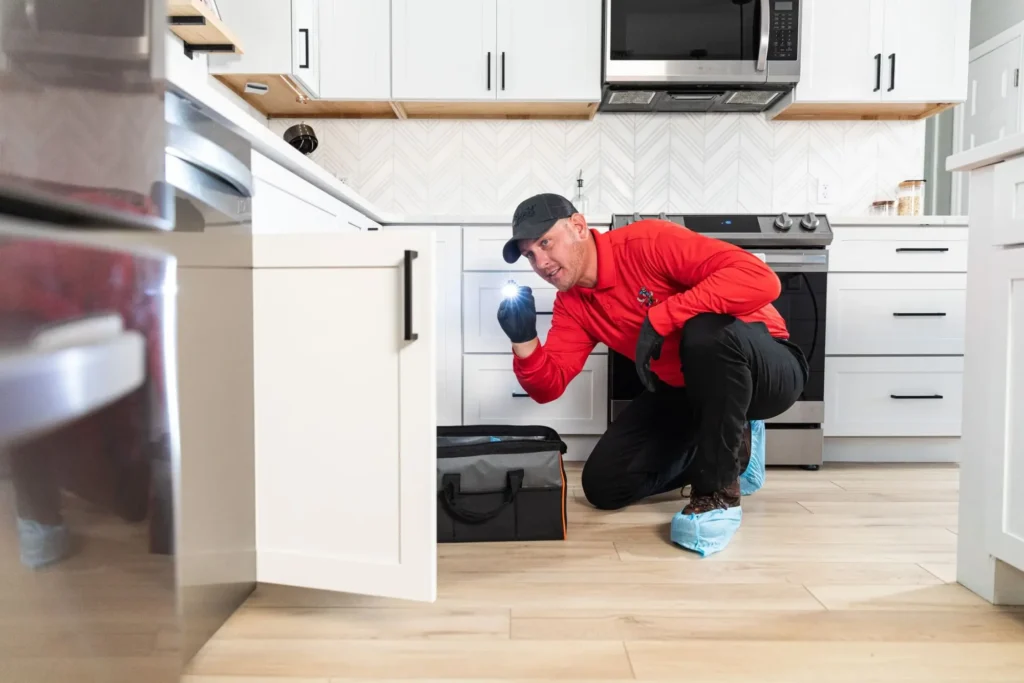
How to Check Your Northeast Florida Home for Cockroaches
- Start in the Kitchen Begin your inspection in the kitchen, as this is often the epicenter of cockroach activity. Pay close attention to areas under and behind appliances, especially the refrigerator and stove. Thoroughly examine inside and under cabinets, around the sink and dishwasher, and in pantries and food storage areas. These locations provide ideal hiding spots for cockroaches due to their proximity to food and water sources.
- Move to the Bathroom Bathrooms are another hotspot due to the moisture. Check under the sink and around the toilet, as well as in and around cabinets and drawers. Don’t forget to inspect behind mirrors and medicine cabinets, as these areas can provide secluded spaces for cockroaches to hide.
- Inspect Other Rooms Don’t neglect other areas of your home. Look in closets, especially those with stored items, as these can provide excellent hiding places. Examine behind and under furniture, around windows and doors, and in bookcases and shelving units. These areas often go overlooked but can harbor cockroach populations.
- Check Utility Areas Laundry rooms, garages, and basements can harbor cockroaches. Inspect around washing machines and dryers, in utility closets, and near water heaters and HVAC units. These areas often provide the warmth and moisture that cockroaches prefer.
- Examine Wall Voids Use a flashlight to peer into electrical outlets and switch plates, areas where pipes or wires enter walls, and cracks and crevices in walls and baseboards. These small spaces can serve as entry points and hiding spots for cockroaches.
- Look for Entry Points Inspect the exterior of your home for potential entry points. Check around doors and windows, where utility lines enter the home, and in the foundation and siding. Identifying and sealing these entry points can help prevent future infestations.
- Check Outdoor Areas In Northeast Florida, cockroaches often live outdoors. Examine mulched areas and gardens, woodpiles and outdoor storage areas, and around outdoor lighting fixtures. These areas can serve as breeding grounds for cockroaches that may eventually make their way into your home.
Remember, in Northeast Florida’s warm, humid climate, cockroaches can thrive year-round. Regular inspections are key to catching infestations early and preventing them from becoming established in your home.

What Do Cockroaches Look Like in Northeast Florida?
Smoky Brown Cockroach
The Smoky Brown cockroach is a common sight in Northeast Florida, particularly in outdoor areas. Adults typically measure 1.25 to 1.5 inches long and have a uniform, dark brown to mahogany color with a somewhat smoky appearance. Both males and females have fully developed wings and are capable of flying, especially on warm nights. They prefer outdoor environments but may enter homes seeking water during dry spells. You’ll often find them in tree holes, mulch, and leaf litter. These cockroaches are attracted to lights and may fly into homes through open windows or doors.
American Cockroach
The American cockroach, also known as the Palmetto bug, is one of the largest cockroach species you’ll encounter in Northeast Florida. Adults can grow up to 2 inches long and are reddish-brown with a yellowish figure-eight pattern on the back of their head. Both sexes have wings and can fly, though they prefer to run. They thrive in warm, moist environments and are often found in basements, sewers, and around pools. American cockroaches are excellent climbers and can often be seen scaling walls or trees.
Australian Cockroach
Despite its name, the Australian cockroach is well-established in Northeast Florida. Adults are about 1 to 1.25 inches long and are similar in appearance to American cockroaches but with distinct yellow markings on the thorax and forewings. Both males and females have wings and are capable of flight. They prefer warm, moist environments and are often found in greenhouses, around pools, and in landscaped areas. Australian cockroaches are attracted to light and are often seen around outdoor lighting fixtures.
German Cockroach
The German cockroach is the most common indoor cockroach species in Northeast Florida. Adults are relatively small, measuring about 0.5 to 0.6 inches long, and are light brown to tan with two dark parallel stripes running from their head to their wings. Both sexes have wings, but they rarely fly. They prefer warm, humid environments and are often found in kitchens and bathrooms. German cockroaches are nocturnal and excellent at hiding in small cracks and crevices.
Florida Woods Cockroach
Also known as the Palmetto cockroach, this species is native to our region. Adults can reach up to 1.5 inches in length and are dark brown to black with a glossy appearance. Males have wings and can fly, while females have underdeveloped wings and cannot fly. As their name suggests, they prefer wooded areas but may enter homes during dry spells. They’re often mistaken for American cockroaches but are less likely to infest homes.
Understanding the appearance and behavior of these common cockroach species can help you identify infestations early and choose the most effective control methods. Remember, in Northeast Florida’s warm, humid climate, cockroaches can be active year-round, so constant vigilance is key to keeping your home pest-free.
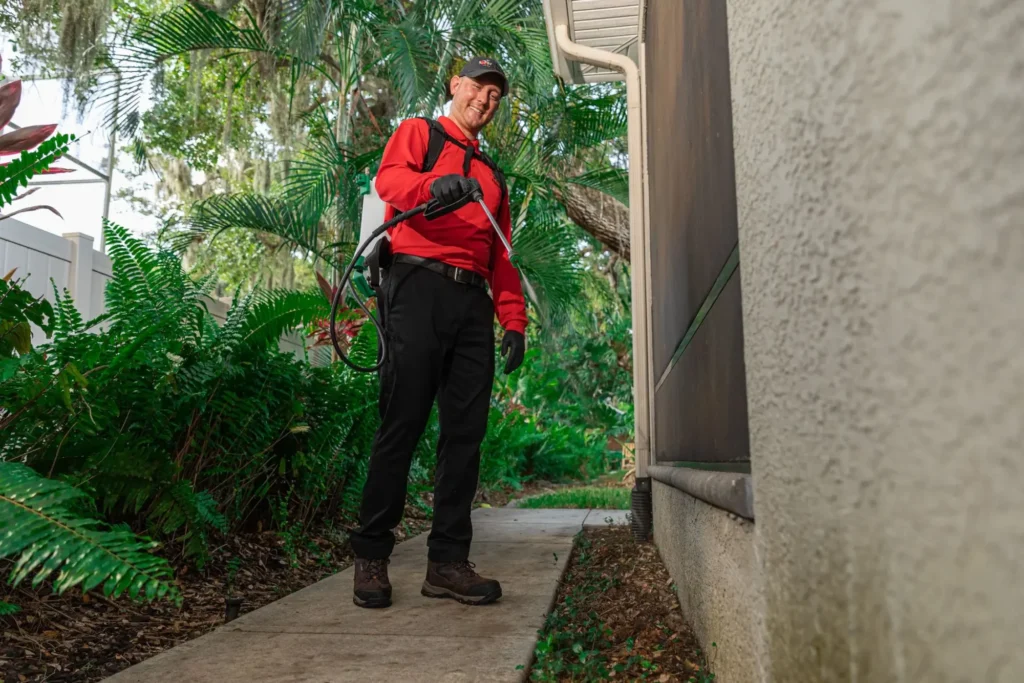
Eco-friendly Solutions for Cockroach Control
In Northeast Florida, where our natural environment is a treasured asset, many homeowners prefer eco-friendly approaches to pest control. These methods can be highly effective against cockroaches while minimizing the impact on our local ecosystem. Here are some environmentally conscious strategies you can employ:
- Diatomaceous Earth This natural substance is made from fossilized algae and works by dehydrating cockroaches. Sprinkle it in areas where you’ve seen roach activity, such as under appliances or along baseboards. Be sure to use food-grade diatomaceous earth and apply it in dry areas for best results.
- Boric Acid Another natural option, boric acid is toxic to cockroaches but has low toxicity for humans and pets when used correctly. Mix it with sugar or flour to create a bait that cockroaches will consume and take back to their nests.
- Catnip Studies have shown that catnip can be an effective cockroach repellent. Grow catnip plants around your home or use catnip oil as a natural deterrent.
- Cucumber Slices Believe it or not, cockroaches dislike the smell of cucumbers. Place cucumber slices in areas where you’ve seen roach activity as a natural repellent.
- Bay Leaves The strong scent of bay leaves can deter cockroaches. Place whole bay leaves in cabinets, pantries, and other areas where you’ve spotted roaches.
- Citrus Peels The strong smell of citrus can repel cockroaches. Save your orange or lemon peels and place them in problem areas.
- Natural Predators Encourage natural cockroach predators in your yard, such as birds, lizards, and certain types of wasps. Creating a diverse ecosystem can help keep cockroach populations in check.
- Neem Oil This natural insecticide derived from the neem tree can be effective against cockroaches. Mix neem oil with water and spray in areas where you’ve seen roach activity.
- Proper Sanitation While not a direct control method, maintaining a clean home is one of the most effective eco-friendly ways to prevent cockroach infestations. Regular cleaning, proper food storage, and addressing moisture issues can significantly reduce the likelihood of cockroach problems.
Remember, while these eco-friendly methods can be effective, they often work best as part of a comprehensive pest management strategy. In Northeast Florida’s warm, humid climate, persistence and a multi-faceted approach are key to successful cockroach control.
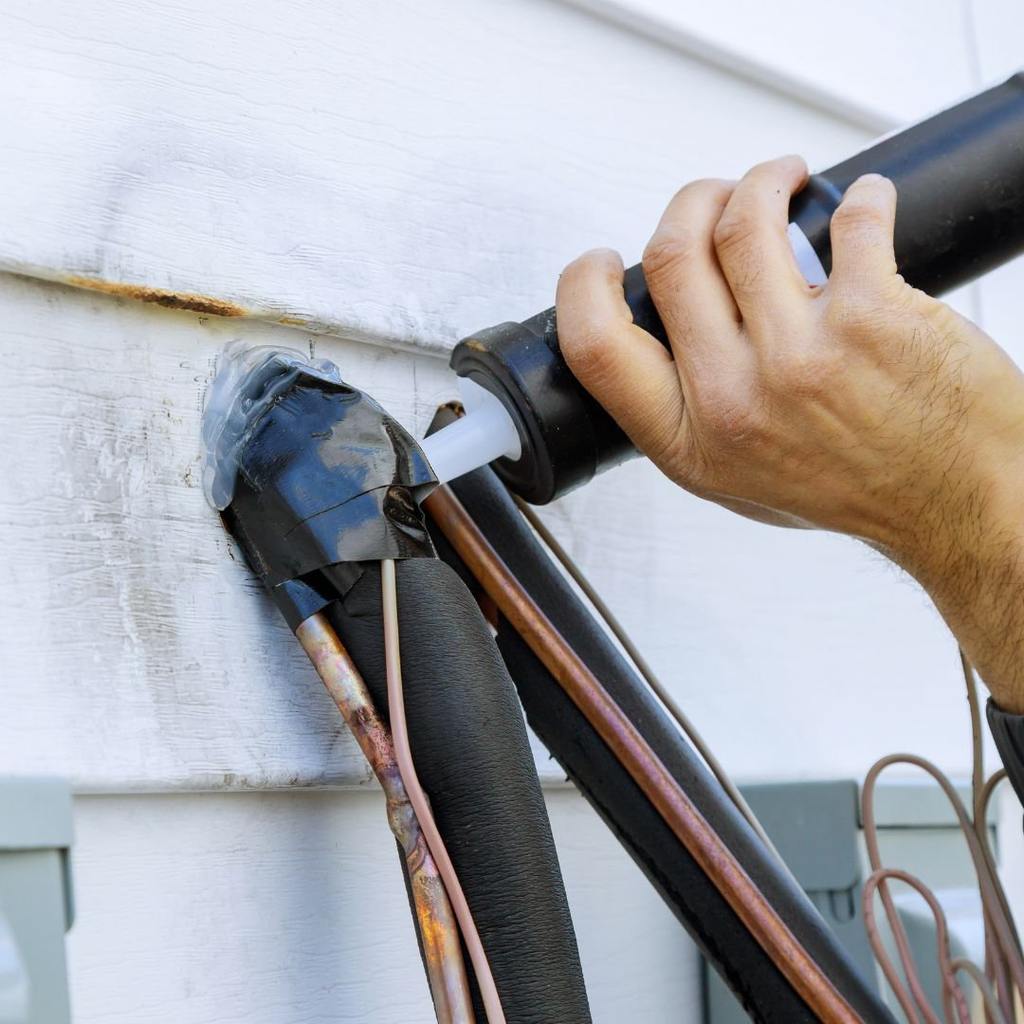
Preventing Cockroaches in Northeast Florida
Preventing cockroach infestations in Northeast Florida requires a proactive approach tailored to our unique climate and environment. By implementing these strategies, you can significantly reduce the likelihood of cockroach problems in your home:
- Seal Entry Points Inspect the exterior of your home for cracks, gaps, and holes. Pay special attention to areas where utilities enter your home. Use caulk, weatherstripping, or steel wool to seal these potential entry points. Remember, in our humid climate, materials can expand and contract, creating new gaps over time, so regular inspections are crucial.
- Control Moisture Our high humidity makes moisture control essential. Fix leaky pipes promptly, use dehumidifiers in damp areas like basements or crawl spaces, and ensure proper ventilation in bathrooms and kitchens. Consider using moisture-resistant materials in areas prone to dampness.
- Proper Food Storage Store food in airtight containers, including pet food. Clean up spills and crumbs immediately, and don’t leave dirty dishes out overnight. In our warm climate, food can spoil quickly, attracting pests, so be vigilant about proper food storage and disposal.
- Regular Cleaning Maintain a consistent cleaning routine, paying special attention to kitchens and bathrooms. Vacuum or sweep regularly, including under appliances and furniture. Don’t forget to clean less obvious areas like the tops of cabinets and inside drawers.
- Declutter Reduce clutter in your home, especially cardboard boxes and piles of newspapers or magazines. These provide ideal hiding spots for cockroaches. If you need to store items, use plastic containers with tight-fitting lids instead of cardboard boxes.
- Manage Outdoor Areas In Northeast Florida, cockroaches often live outdoors before moving inside. Keep your yard tidy by removing leaf litter, keeping grass short, and storing firewood away from your home. Trim bushes and trees away from your house to reduce potential entry points.
- Use Screens Install and maintain screens on windows and doors to prevent cockroaches from entering your home. This is especially important in our climate, where we often keep windows open for ventilation.
- Inspect Incoming Items Before bringing boxes, groceries, or secondhand items into your home, inspect them for signs of cockroaches. This is particularly important for items that have been stored in garages or basements.
- Proper Waste Management Keep garbage in sealed containers and dispose of it regularly. If you compost, keep the bin away from your home and ensure it’s properly maintained to avoid attracting pests.
- Address Standing Water Eliminate sources of standing water around your property, such as in potted plant saucers, birdbaths, or clogged gutters. These can attract cockroaches and other pests.
By implementing these prevention strategies and staying vigilant, you can create an environment that’s inhospitable to cockroaches, even in Northeast Florida’s cockroach-friendly climate. Remember, prevention is always easier and more cost-effective than dealing with an established infestation.
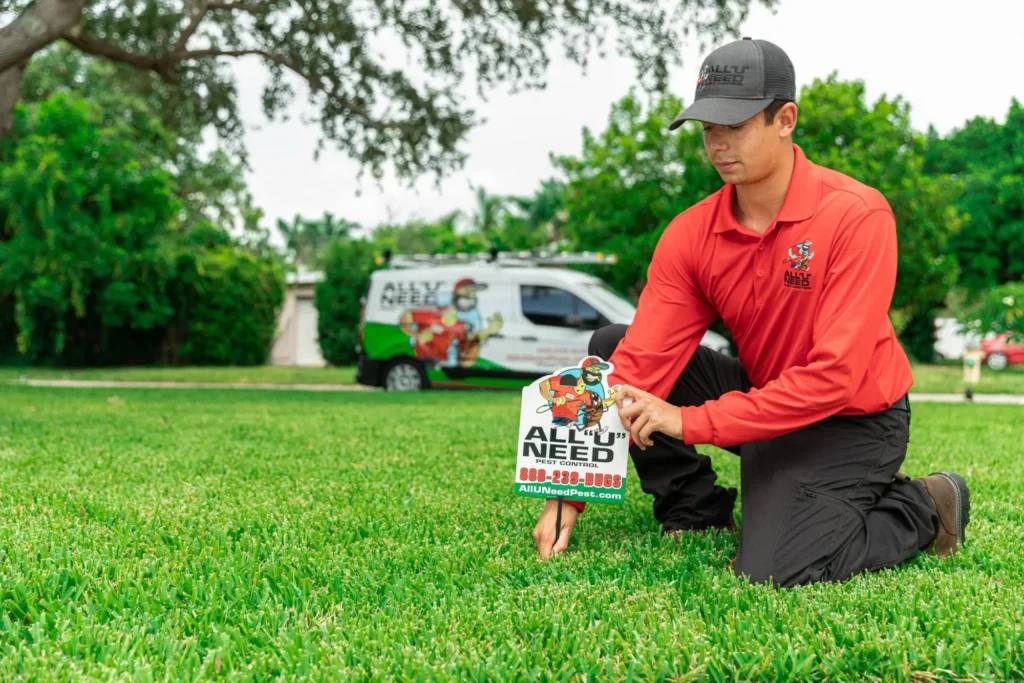
Exterminate Cockroaches From Your Northeast Florida Home with All U Need Pest Control
Living in Northeast Florida means enjoying beautiful beaches, lush landscapes, and warm weather year-round. However, it also means dealing with persistent pest problems, particularly cockroaches. These resilient insects thrive in our humid climate, making professional pest control services an essential part of maintaining a healthy, comfortable home.
At All U Need Pest Control, we understand the unique challenges posed by Northeast Florida’s environment when it comes to cockroach control. Our team of experienced professionals is equipped with the knowledge, tools, and eco-friendly solutions necessary to effectively eliminate cockroach infestations and prevent future problems.
We offer comprehensive cockroach control services tailored to the specific needs of Northeast Florida homes. Our approach combines thorough inspections, targeted treatments, and ongoing prevention strategies to ensure long-lasting results. We’re committed to using environmentally responsible methods that are safe for your family and pets while still being tough on pests.
Don’t let cockroaches take over your Northeast Florida home. Take the first step towards a pest-free living space by contacting All U Need Pest Control today. Our friendly team is ready to answer your questions, provide a free estimate, and schedule your initial consultation. Remember, when it comes to cockroach control in Northeast Florida, we’re the experts you can trust.
Call us now at (888) 239-Bugs (888-239-2847) to reclaim your home from cockroaches and enjoy peace of mind knowing your pest problems are in capable hands. With All U Need Pest Control, you’re not just getting a service; you’re investing in a cockroach-free future for your Northeast Florida home.
Location Contact:
4949 Sunbeam Road Unit 16 Jacksonville FL, 32257
Get Directions for 4949 Sunbeam Road Unit 16Jacksonville FL, 32257 on Google Maps904-712-1989
Call All "U" Need Pest Control